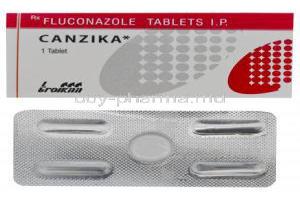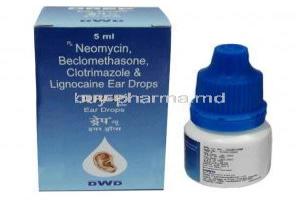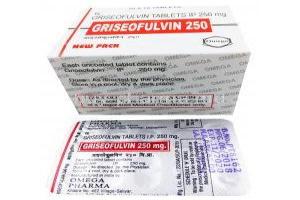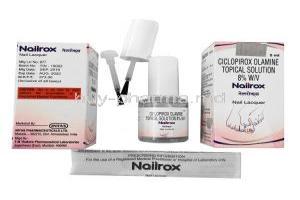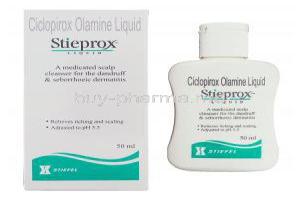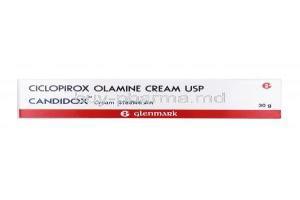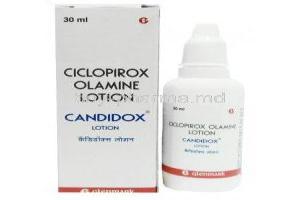Vfend Injection
- Â
- Â
- Introduction to Vfend Injection
- Â
- Composition of Vfend Injection
- Â
- Uses of Vfend Injection
- Â
- Off-Label Use of Vfend Injection
- Â
- How Vfend Injection Works
- Â
- Dosage and Administration of Vfend Injection
- Â
- Administration Specifics Across Different Demographics
- Â
- Side Effects of Vfend Injection
- Â
- Interaction of Vfend Injection with Other Medications
- Â
- Important Precautions When Using Vfend Injection
- Â
- Contraindications for Vfend Injection
- Â
- Careful Administration of Vfend Injection
- Â
- Handling Precautions for Vfend Injection
- Â
- Overdosage of Vfend Injection
- Â
- Conclusion
Introduction to Vfend Injection
Overview of Vfend as an Antifungal Medication
Vfend, also known as Voriconazole5, is an example of an antifungal drug. This incredible medication is specifically created to fight against severe fungal infections. By blocking the activity of cytochrome P450 enzymes, Vfend effectively stops the growth of fungal cells, displaying its powerful antifungal abilities.

Brief History and Development of Vfend Injection
The origin of Vfend can be traced back to a scientific effort focused on improving antifungal treatment. It was developed as a modified form of fluconazole. Its creation represented a noteworthy progression in the field. The approval of Vfend by the FDA in 2002 established its importance as a weapon against invasive fungal infections.
Composition of Vfend Injection
Key Ingredients and Their Roles
- Voriconazole: Voriconazole, the ingredient in Vfend, is crucial for its effectiveness. Its primary function is to disrupt the synthesis of cell membranes.
- Excipients: The formulation also contains ingredients that help stabilize the compound and improve its solubility for optimal delivery.

Formulation and Pharmaceutical Properties
The formulation of Vfend truly showcases the capabilities of the pharmaceutical industry. Being administered intravenously, it possesses properties allowing quick absorption and distribution, ensuring the desired therapeutic effects occur promptly. Moreover, its metabolic processes within the liver exemplify its sophisticated profile.
Uses of Vfend Injection
Primary Indications: Treating Specific Fungal Infections
Vfend is mainly used3 for its effectiveness against various fungal pathogens, especially Candida and Aspergillus species. It is highly praised for treating aspergillosis, a severe fungal infection that poses a significant risk to people with weakened immune systems.
Spectrum of Fungal Organisms Targeted by Vfend
Vfend has an intricate range of actions that effectively combat various fungal organisms. It demonstrates effectiveness against both yeasts and molds, even those particularly resistant. The fact that it can target a set of fungal pathogens highlights its significance in antifungal treatment strategies.
Off-Label Use of Vfend Injection
Exploring Non-Standard Applications in Medical Practice
Although Vfend Injection is mainly known for its ability to fight fungal infections, it has proven helpful in unconventional medical applications. The practice of prescribing a drug for conditions beyond its approved uses, known as off-label use, has gained attention in the field, mainly due to Vfend's wide-ranging antifungal capabilities.
Case Studies and Research Supporting Off-Label Use
Recent case studies and research have shed light on Vfend's potential beyond its applications. These studies often demonstrate how effective it can be in treating atypical fungal infections, giving us a glimpse into the versatility of this medication. However, it's crucial to remember that using the Vfend label should only be done with close clinical supervision and after thoroughly assessing the potential risks and benefits.
How Vfend Injection Works
Mechanism of Action Against Fungal Cells
Vfend works by utilizing a focused mechanism. It hinders the activity of the cytochrome P450-dependent enzyme, which plays a crucial role in the creation of ergosterol – an essential element of fungal cell membranes. By interfering with this process, Vfend disturbs the integrity of the cell membrane, ultimately causing the demise of the fungal cell. This approach ensures an impact on human cells, making Vfend a favored option in antifungal treatments.
Comparative Analysis with Other Antifungal Agents
When we compare Vfend to antifungal agents, it shows a broader range of effectiveness, especially against Aspergillus species and specific emerging fungal pathogens less susceptible to other medications. The way Vfend is absorbed into the body and penetrates tissues gives it an advantage over antifungals like fluconazole. This analysis emphasizes the strength and versatility of Vfend as an option in antifungal treatment.
Dosage and Administration of Vfend Injection
Standard Dosage Guidelines for Adults
Typically, there is a dosage plan when giving Vfend Injection to adults. It starts with a dose to quickly reach the desired level of the drug in the bloodstream, followed by a regular maintenance dose4. The exact amount of medication needed depends on how severe the infection is and the patient's overall health condition.

Adjustments in Dosage Based on Medical Conditions
Patients with kidney problems may need to have their Vfend Injection dosage adjusted to avoid any build-up of the medication and associated risks. Similarly, individuals with liver issues should be close. Their dosage may need to be modified due to changes in metabolizing the drug. In summary, when administering Vfend, it is crucial to take a personalized approach that considers each patient's unique needs and medical circumstances to achieve effectiveness and safety.
Administration Specifics Across Different Demographics
Administration to Elderly Patients
Administering Vfend Injection to patients requires a careful approach. Considering the changes that come with age, like decreased kidney and liver function, it is crucial to make precise dosage adjustments and closely observe for any possible adverse reactions.

Special Considerations and Dosage Adjustments
Elderly individuals might need doses or adjusted dosing schedules to accommodate changes in their metabolism and reduced ability to clear drugs from their system. It is crucial to evaluate the medications they are taking concurrently and any existing health conditions to prevent potential drug interactions and complications.
Administration to Pregnant Women and Nursing Mothers
For women and nursing mothers, extra care is taken when using Vfend Injection. The safety, risks, and recommendations are all based on assessing the potential advantages compared to any possible harm it may pose to the unborn baby or breastfeeding infant.

Safety, Risks, and Recommendations
Considering the amount of research available for this particular group, it is advisable to utilize Vfend only in cases where it is essential and always with close medical oversight. Due to the risks associated with developmental outcomes, a thorough evaluation that considers the balance between benefits and risks should be conducted individually.
Administration to Children
When using Vfend Injection for children, it's essential to take an age-specific approach. Since pediatric patients have growing bodies and pharmacokinetics that can vary, it's often necessary to customize their dosage regimens.

Age-Specific Dosage and Safety Information
Dosages for children are usually determined by considering their body weight and age. Adjustments may be necessary based on how the child responds to the medication and their tolerance levels. It is essential to monitor for any potential side effects to ensure the safe administration of Vfend in this particular group.
Side Effects of Vfend Injection
Common Side Effects
Vfend Injection, like any medication, can have a range of side effects1. Some reported ones include changes in vision, skin irritation, nausea, headaches, and discomfort in the abdomen. Although these effects are usually not severe, monitoring them and adjusting the dosage if needed is essential.

Frequency and Management Strategies
It is crucial to monitor patients and educate them about recognizing the potential side effects so that prompt intervention can be initiated. The management approaches might involve providing relief, adjusting the dosage, or, in certain situations, stopping medication use.
Severe and Rare Side Effects
Serious and uncommon adverse effects of Vfend may include liver toxicity, severe skin reactions, and irregular heart rhythms. While these occurrences are rare, it is crucial to seek medical attention if they arise.
Identifying Symptoms and Immediate Actions
Healthcare professionals and patients must stay alert for signs such as yellowing of the skin, skin rashes, and abnormal heartbeats. It is crucial to seek medical advice if these symptoms are observed.
Interaction of Vfend Injection with Other Medications
Common Drug Interactions and Consequences
Vfend Injection has the potential to interact6 with medications, which could affect their intended therapeutic effects or even increase the risk of toxicity. Some everyday interactions to be aware of are with immunosuppressants, anticoagulants, and other antifungal drugs.
Guidelines for Avoiding Adverse Interactions
To minimize any adverse effects, it is crucial to carefully examine the patient's existing medication routine before starting Vfend. It may be necessary to make adjustments to the doses of drugs taken simultaneously or consider alternative treatments to prevent any harmful interactions. Ongoing monitoring and education of the patient are essential to guarantee the efficient use of Vfend Injection alongside other medications.
Important Precautions When Using Vfend Injection
Patient Assessment Prior to Administration
Before administering Vfend Injection, it is essential to evaluate the patient. This assessment involves gathering a medical history, including information about known allergies, existing medical conditions, and current medications. The goal is to identify any risks or contraindications that could prevent the safe administration of Vfend.
Monitoring Requirements During Treatment
During the Vfend treatment, it is crucial to maintain monitoring. This involves blood tests to keep track of liver function since Vfend can potentially harm the liver. It is also essential to observe for any adverse reactions or side effects. Moreover, it might be necessary to monitor the levels of the medication to ensure its effectiveness and prevent any toxicity issues in patients with liver or kidney problems.
Contraindications for Vfend Injection
Conditions and Scenarios Where Use is Not Advised
Vfend Injection should not be used in situations. This includes patients who have a known sensitivity to voriconazole or any other ingredient in the medication, as well as those who are taking certain medications that can have harmful interactions with Vfend. It is not recommended for use in patients with liver disease unless careful consideration and monitoring are implemented.

Alternatives for Patients with Contraindications
If patients cannot receive Vfend for medical reasons, exploring other options for antifungal treatment is essential. The specific alternative medication chosen will depend on factors such as the type of infection, the patient's overall health, and any other medications they are currently taking. In these situations, seeking advice from a disease specialist may be helpful.
Careful Administration of Vfend Injection
Ensuring Correct Usage in Clinical Settings
Ensuring the administration of Vfend Injection is extremely important in clinical settings. This includes following the prescribed dosages and infusion rates and checking the solution's integrity before administering it. Healthcare professionals must understand the drug's pharmacology and be aware of any possible interactions or side effects.
Protocols for Handling and Administration
- Before administering Vfend Injection, handling and preparing it with adherence to aseptic techniques is crucial to prevent contamination.
- When administering the injection, following the protocol and distributing it over a duration usually between 1 and 2 hours is typically recommended. Observing the patient for immediate adverse reactions throughout the infusion process is essential. Furthermore, continuous monitoring should be carried out after the infusion is complete.
- Proper disposal protocols should be followed for any medication or materials used during administration to ensure safety and compliance with healthcare regulations. These protocols aim to minimize risks for patients and healthcare providers involved in administering Vfend Injection. By adhering to these protocols, we can ensure that Vfend Injection is administered safely and effectively while reducing potential risks associated with its use.
Handling Precautions for Vfend Injection
Storage Requirements and Shelf Life
It is essential to store Vfend Injection to ensure it remains effective and safe. The medication should be kept at room temperature, away from light and moisture. Remember that the shelf life of Vfend Injection is crucial, so make sure not to use it after its expiration date, as this could impact its effectiveness and safety.

Safe Disposal Practices for Unused Medication
It's crucial to prioritize the disposal of unused Vfend Injections to prevent possible harm to people and the environment. It's important not to throw it in the household trash or flush it down the toilet. Instead, it is recommended to follow medication disposal guidelines, such as participating in take-back programs or following instructions provided with the medication, for proper disposal.
Overdosage of Vfend Injection
Symptoms and Immediate Responses
If someone takes many Vfend Injections, they might experience signs like vision changes, feeling confused, seeing things that aren't there, and abnormal results from liver function tests. The first thing to do is stop taking the medication and provide treatment for the symptoms. It's essential to seek medical help to handle these symptoms effectively.

Treatment Protocols for Overdosage Cases
The primary approach to address an overdose of Vfend involves providing supportive care. This typically includes monitoring the patient's vital signs and taking necessary measures to stabilize them. In some instances, interventions, like gastric lavage or administering activated charcoal, may be employed to prevent further medication absorption. It is crucial to ensure monitoring and supportive care within a healthcare facility until the patient's condition stabilizes.
Conclusion
- Vfend Injection has become a tool in the fight against severe fungal infections. Its effectiveness and wide range of action have improved antifungal therapy, offering a vital treatment choice for previously difficult-to-manage infections.
- As we look to the future, ongoing research in treatments is constantly evolving. The aim is to increase effectiveness, reduce side effects, and address emerging resistance patterns in fungal organisms. Exciting developments in formulations, combination therapies, and innovative antifungal agents hold promise for more effective and safer treatment options for infectious diseases.
- The role of Vfend in this changing landscape highlights its significance and paves the way for further advancements in antifungal treatment strategies.



